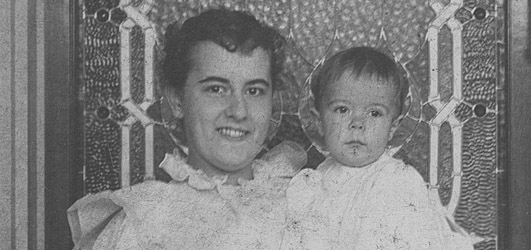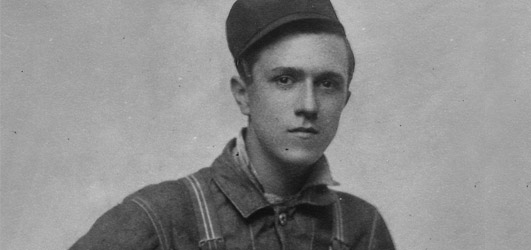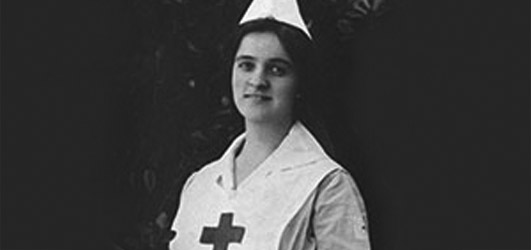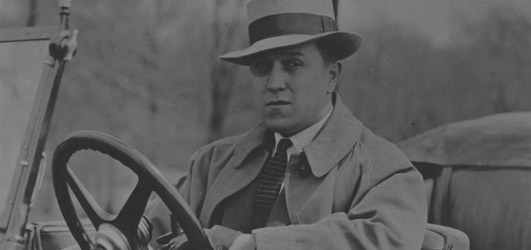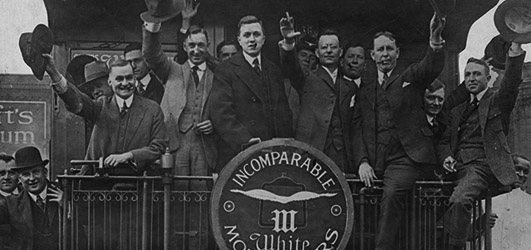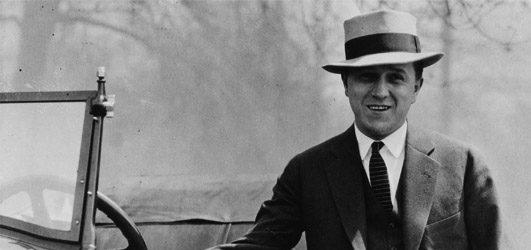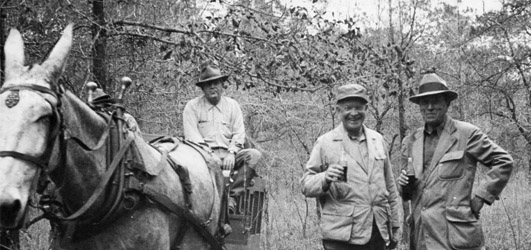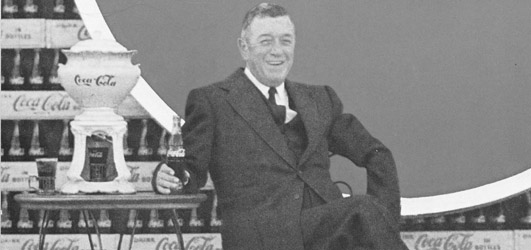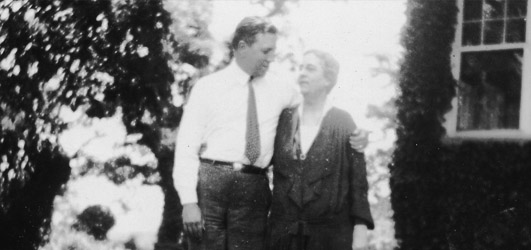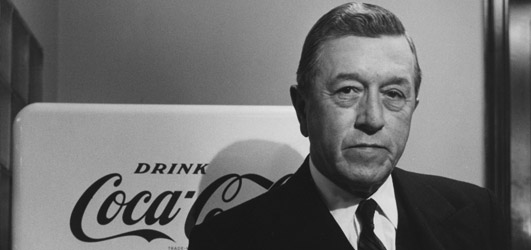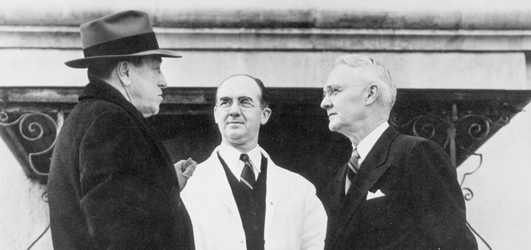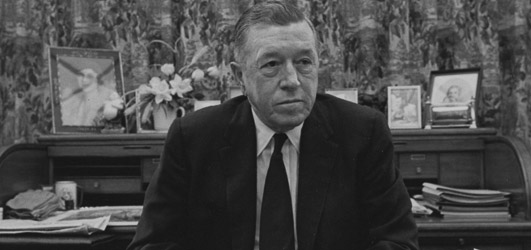Robert W. Woodruff
Robert Winship Woodruff was a remarkable businessman and philanthropist. He became president of The Coca-Cola Company in 1923 and guided it until his death in 1985, helping to shape the company from a local soft drink business into the world’s best-known brand.
Mr. Woodruff was not only dedicated to The Coca-Cola Company, but also to his business associates, friends and community. He remembered hundreds of friends’ birthdays each year with the gift of a rose in a Coca-Cola bottle, and his life is filled with stories of large and small acts of generosity.
In civic life, Mr. Woodruff preferred to remain in the background, making anonymous gifts that greatly enriched his hometown of Atlanta. His philanthropy focused on transforming the small, bustling railroad town into a world-class city, and he made significant gifts to Atlanta’s health, education and cultural institutions.
Whatever the gift, Mr. Woodruff believed in giving quietly. On his desk sat a quote embodying his life’s creed: “There is no limit to what a man can do or where he can go if he doesn’t mind who gets the credit.”

